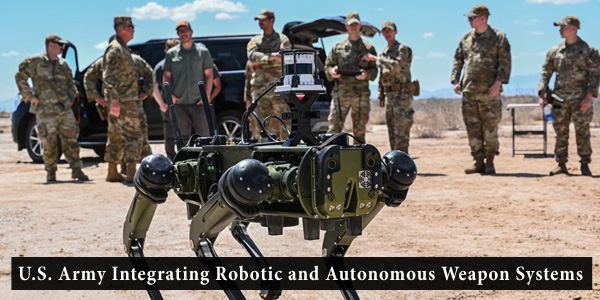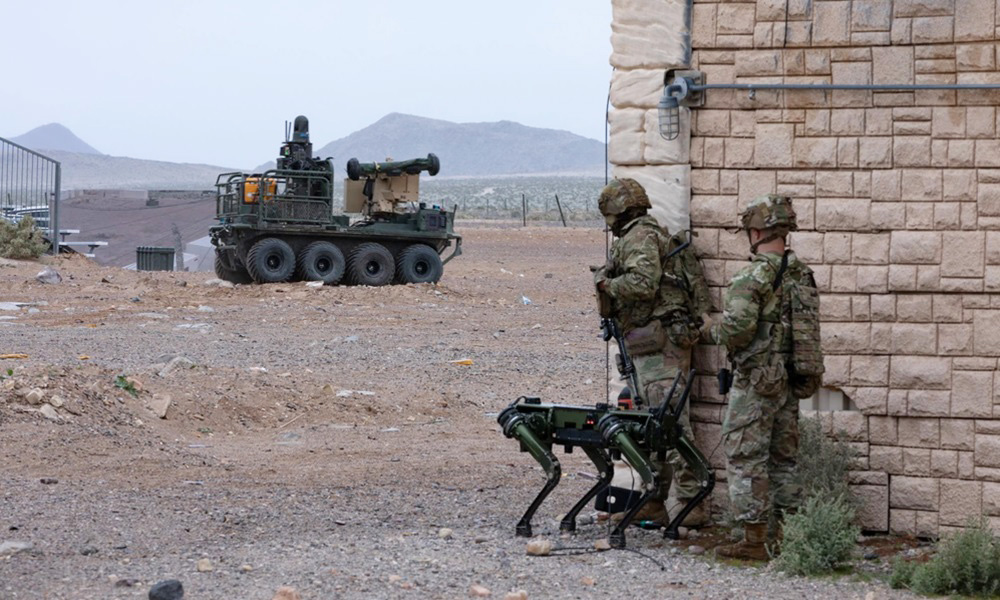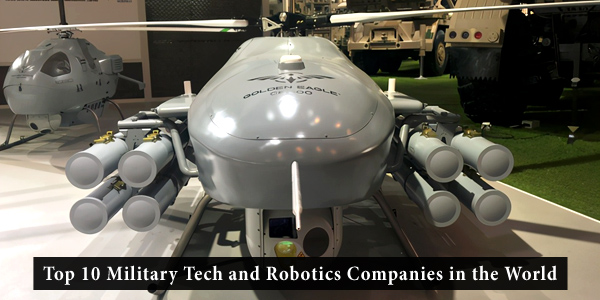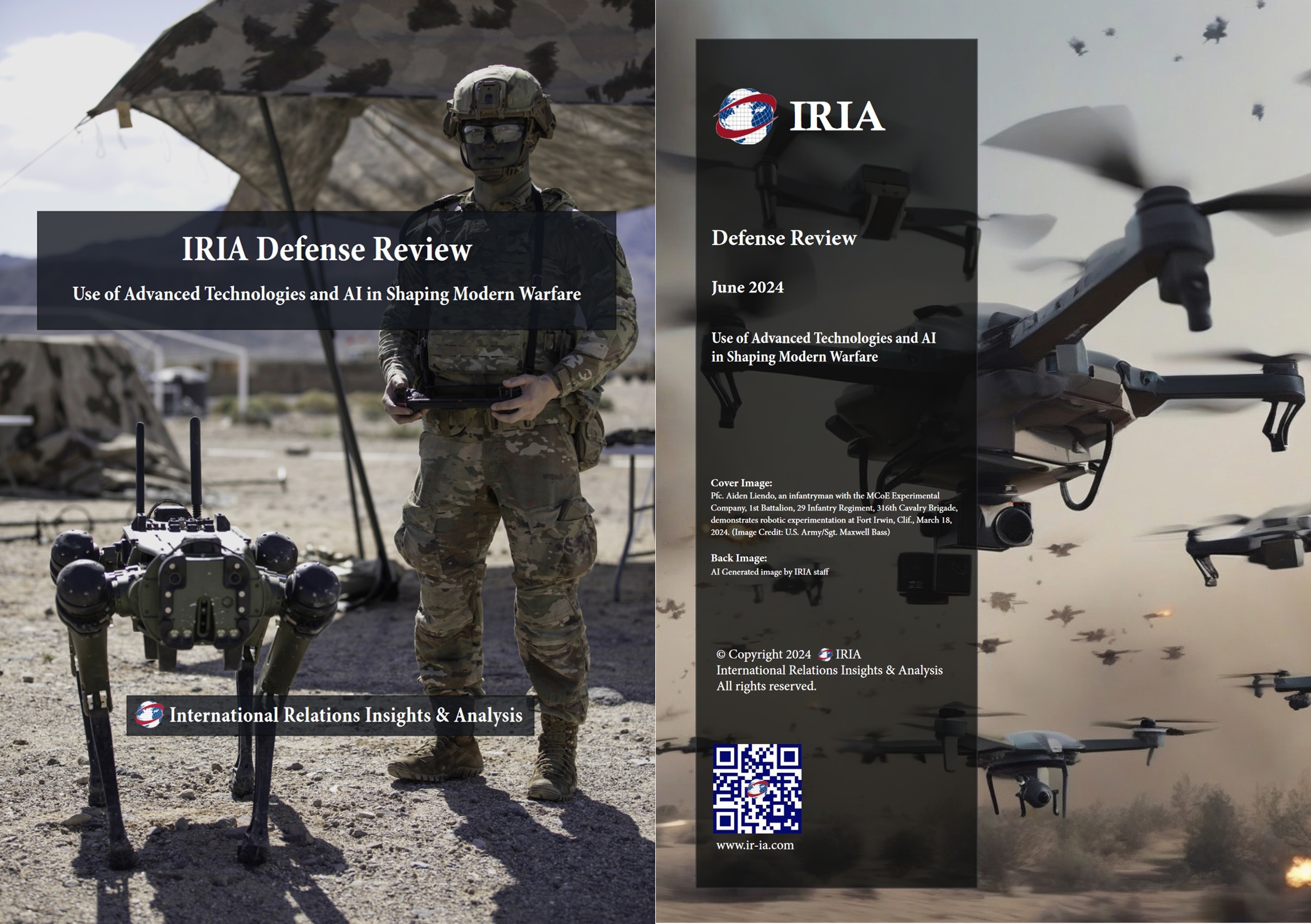U.S. Integrating Advanced Robotic and Autonomous Weapon Systems into Army Units
June 26, 2024

Robotics and Autonomous Systems have become increasingly vital in military operations, with significant impacts on defense capabilities. As countries invest in this technology, these systems will shape future conflicts and warfighting.
The United States Army is actively integrating advanced robotic and autonomous systems into its units, spanning ground and aerial platforms, with promising experiments conducted at the operational level. The Army envisions a future where soldier formations are more efficient and lethal due to these advancements.
The U.S. Army’s strategy emphasizes integrating autonomous systems and artificial intelligence (AI) into soldier formations to achieve domain superiority, protect soldiers, and provide the military with crucial advantages over adversaries. The U.S. Army Robotics and Autonomous Systems strategy focuses on empowering soldiers, enhancing unit capabilities and human- machine teaming, and achieving transformative operational advancements through the rapid fielding of robotic technologies.
The United States Department of Defense announced on March 22, 2024 that the Army is advancing modernization capabilities by integrating cutting-edge technology and autonomous systems both on the ground and in the air with promising experiments at the operational level.
"The Army is moving toward a future where soldier formations will be more efficient and lethal" - U.S. Department of Defense.
According to the Pentagon statement, Chief of Staff of the United States Army General Randy George discussed some of the advancements while talking with the Defense One digital media platform in Washington after observing Project Convergence Capstone 4, an experiment involving the Army, Navy, Air Force, Marines, and Space Force.
The U.S. Army Gen. George said, "We've all seen how the battlefield is changing, [and] we know that you can't have these big C2 [command and control] nodes that are out there." George added, "We know that machines can do a lot of things right now much more effectively and much cheaper, and we're going to have to incorporate them into our formations."
The U.S. Army general received a briefing on the Army’s latest experimental capabilities and technology advancements from Gen. James E. Rainey, the commanding general of Army Futures Command, at Project Convergence - Capstone 4, and highlighted the importance next-generation command and control (C2) system capabilities with industry partners.
Project Convergence Capstone 4
The Project Convergence Capstone 4 is the two-phase, joint, and multination experiment that took place at Camp Pendleton, California, and the Army's National Training Center in Fort Irwin, California, from February 23 to March 20, 2024.
Project Convergence is led by Army Futures Command and involves a series of experiments that allow warfighters an opportunity to experiment with the latest technologies at the operational level and further improve methods for synchronizing as a joint force. It involved all units including the United States Army, Navy, Marine Corps, and Air Force.
More than 4,000 military personnel of the joint force, civilians, contractors, and armed forces from the U.S. and allied forces including the United Kingdom, Australia, Canada, New Zealand, France, and Japan took part in the Army’s largest experimentation exercises in beaches, oceans, air and deserts of the U.S. West Coast. Project Convergence Capstone 4 involved more than 200 defense systems and technologies in a real-world environment.
Project Convergence includes a continuous, structured series of demonstrations and experiments at various locations. It ensures that the U.S. Army can effectively overmatch and counter its adversaries in competition and conflict by rapidly and continuously integrating or converging effects across all domains including land, air, sea, space, and cyberspace.
The groundbreaking joint and multinational military experiment exercises enhanced and integrated the state-of-the-art defense capabilities of the U.S. Army units. It strengthened the
effectiveness of joint and allied forces, with a particular emphasis on testing advanced air and missile defense systems as well as leveraging sensor capabilities from both drones and aircraft to enhance force protection and targeting strategies.
During Project Convergence Capstone 4, several systems were tested including, the Quadruped Ghost robotic dog (unmanned ground vehicles), the HIVE unmanned aircraft system (UAS), Small Multipurpose Equipment Transport (SMET) robotic mule, Fortum Skydome with Drone Hunter counter-unmanned aircraft system, Ghost-X unmanned aircraft system, and unmanned transport vehicles with autonomous weapon systems. The U.S. Army soldiers also conducted sling load operations with autonomous UH-60 Black Hawk helicopters.
 U.S. soldiers assigned to the 1st Battalion, 29th Infantry Regimen take part in a human-machine integration demonstration using the Ghost Robotic Dog and the U.S. Army Small Multipurpose Equipment Transport (SMET) of new U.S. Army capabilities at Project Convergence - Capstone 4. (Image Credit: U.S. Army/Spc. Samarion Hicks)
U.S. soldiers assigned to the 1st Battalion, 29th Infantry Regimen take part in a human-machine integration demonstration using the Ghost Robotic Dog and the U.S. Army Small Multipurpose Equipment Transport (SMET) of new U.S. Army capabilities at Project Convergence - Capstone 4. (Image Credit: U.S. Army/Spc. Samarion Hicks)
• Quadruped Ghost robotic dogs are high-endurance and agile unmanned ground vehicles that provide enhanced situational awareness and support for frontline soldiers and serve as their eyes and ears.
• The HIVE UAS provides soldiers on the ground with improved mission efficiency and real-time situational awareness while conducting operations.
• The SMET is an eight-wheeled transport vehicle with robotic technology for dismounted soldiers. It is an equipment-carrying "robotic mule" and can be used for combat missions, combat support, and combat service support functions and payloads.
• The Fortum Skydome with Drone Hunter is an autonomous, radar-guided, counter-unmanned aircraft system with modular attachments rapidly firing nets to ensnare enemy UAS.
• Ghost-X is a modular, expeditionary, and extended-range unmanned aircraft system that can be assembled by a single operator in less than 2 minutes and deployed in most challenging environments. It can be used for reconnaissance and security, targeting, and force protection missions.
• U.K. Experimentation and Trails Group's unmanned, eight-wheeled, all-terrain transport vehicles are armed with an autonomous weapon system that can support dismounted soldiers in an urban environment.
To Continue Reading, Download Full Report...
ALSO READ:
Regions
Issues


















 How AI is Transforming Modern Warfare and Strategies
How AI is Transforming Modern Warfare and Strategies Top 10 Military Tech and Robotics Companies in the World
Top 10 Military Tech and Robotics Companies in the World








